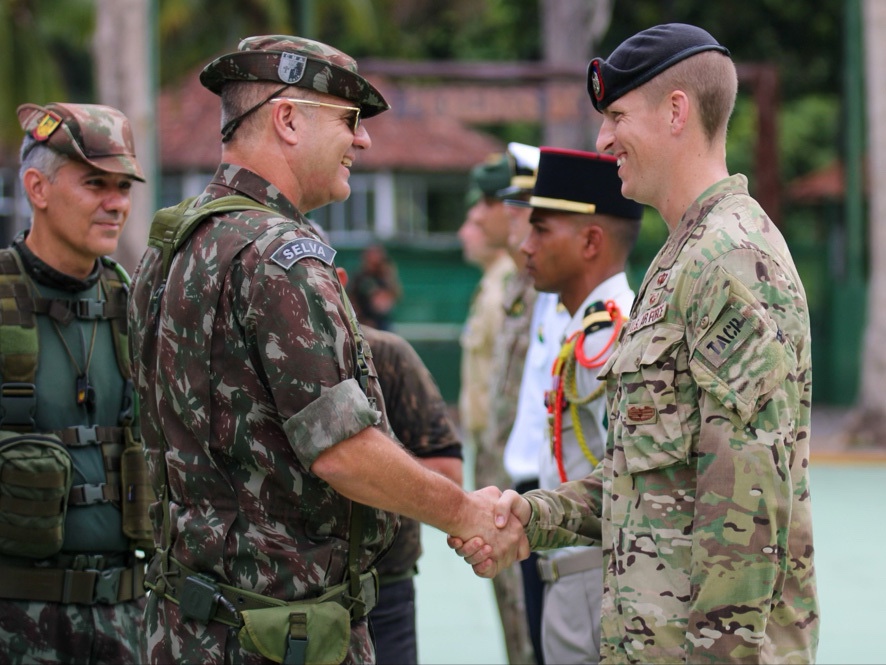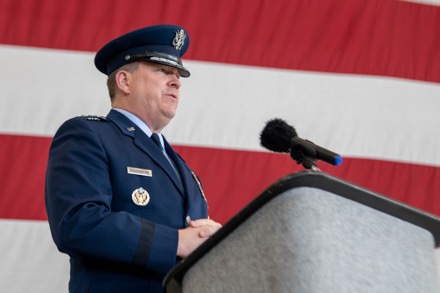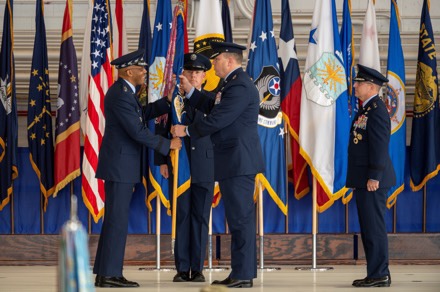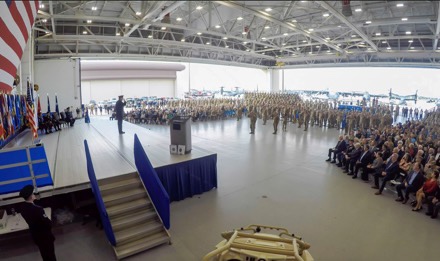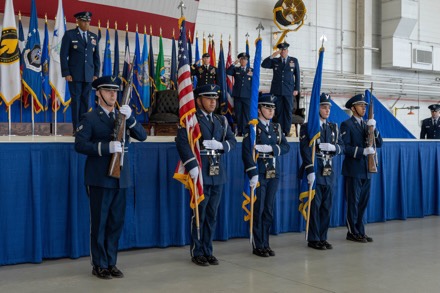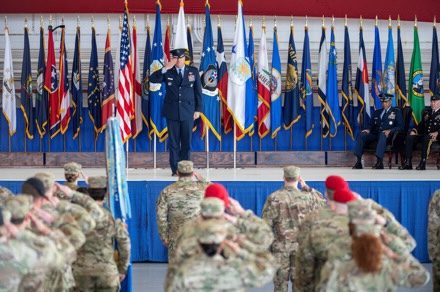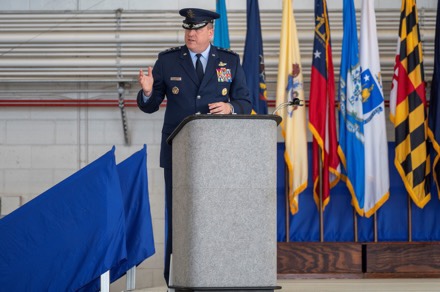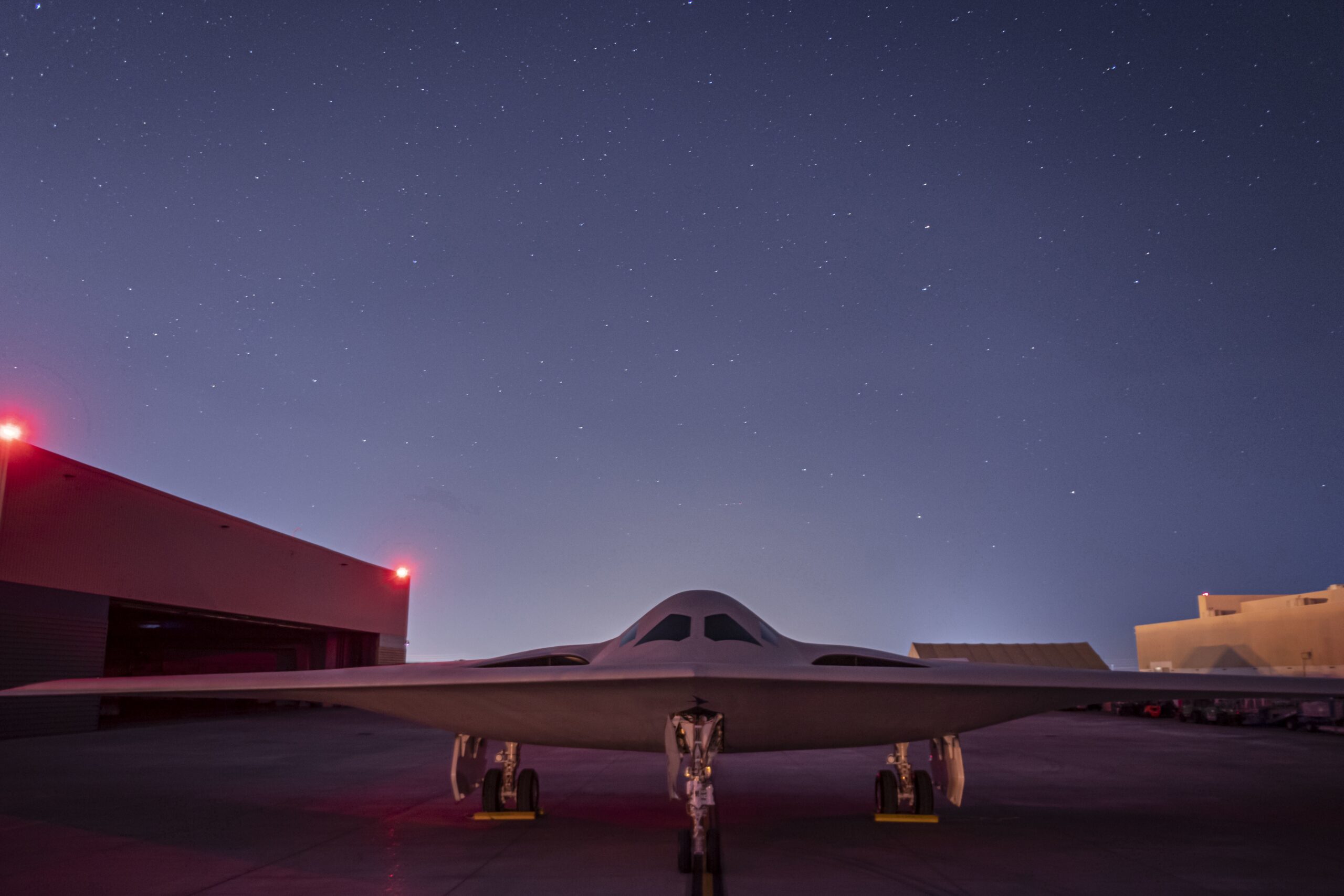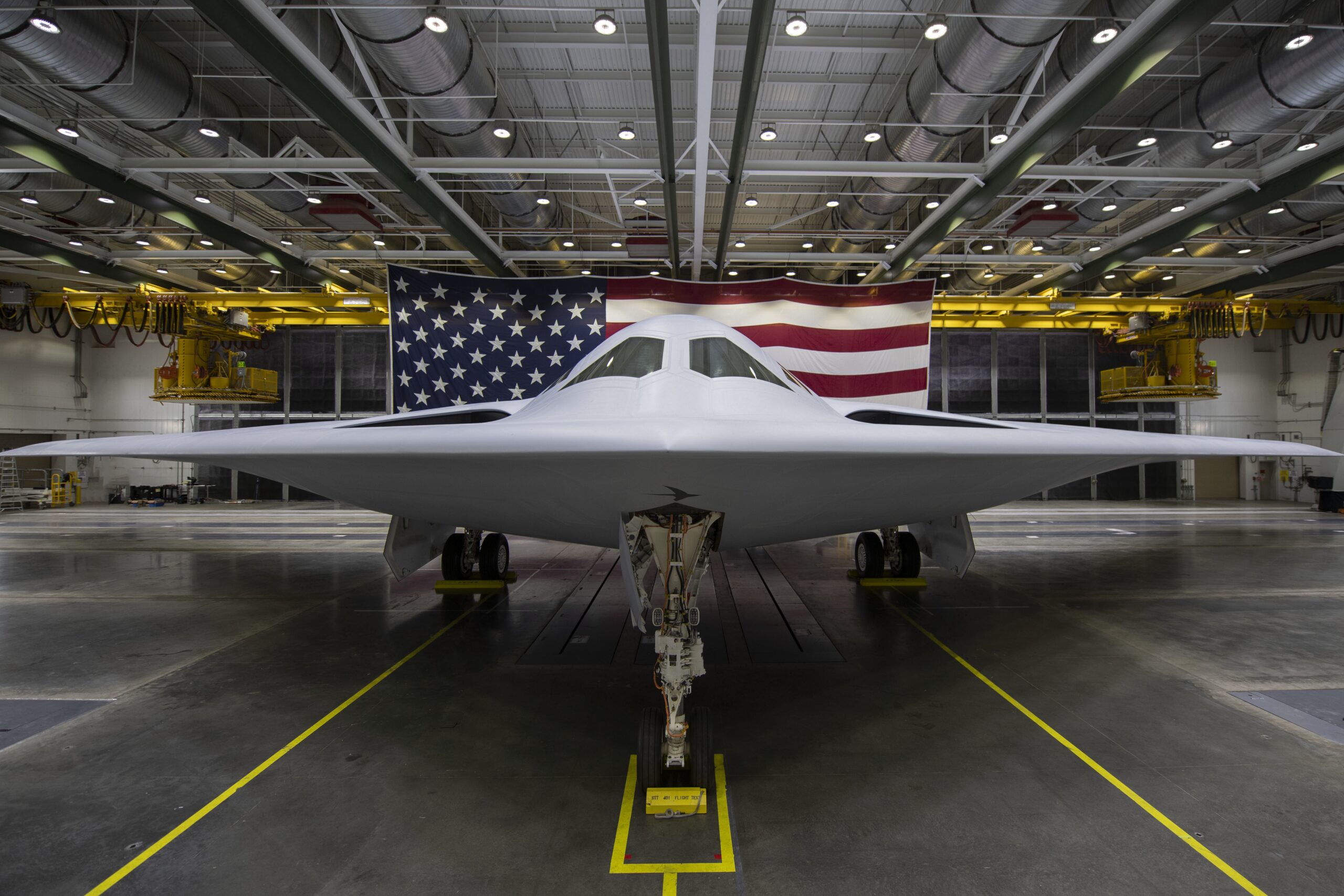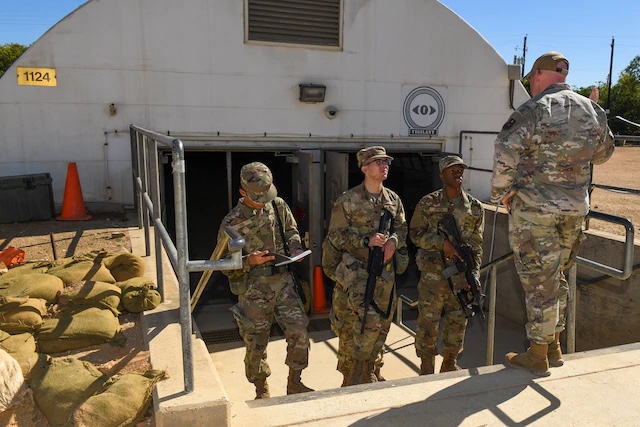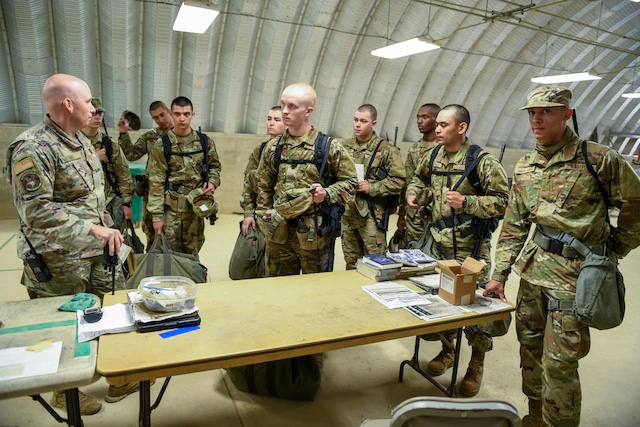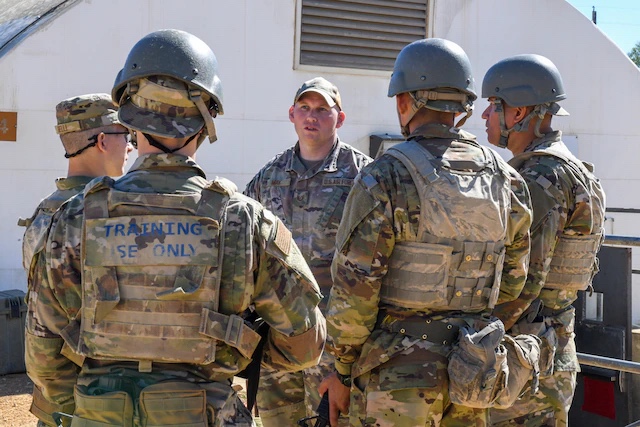PEASE AIR NATIONAL GUARD BASE, N.H. (AFNS) —
In a feat of air mobility endurance, a KC-46A Pegasus from the 157th Air Refueling Wing flew a non-stop mission halfway around the globe and back, Nov. 16 to 17.
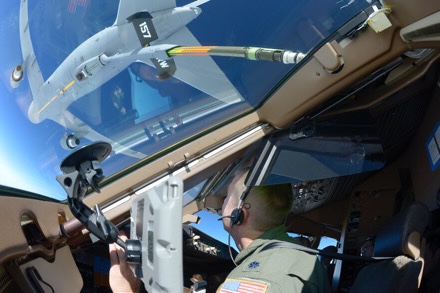
The point-to-point, 36-hour, 16,000-mile, multi-crew, total force sortie was the longest such mission in the history of Air Mobility Command, the active duty major command to which the 157th ARW is aligned.
Gen. Mike Minihan, AMC commander, has relentlessly driven the command to find new ways to employ current assets in anticipation of a future fight.
“This extended mission is yet another example of capable Airmen taking charge and moving out to accelerate our employment of the KC-46A,” Minihan said. “This total force mission boldly highlights the imperative to think differently, change the way we do business, and provide options to the joint force.”
Leaving from the east coast of the U.S. on a cold and rain-soaked morning, the crew flew west across the country and out into the Pacific Ocean. After overflying Hawaii, the crew flew across the International Dateline to Guam, before turning around and retracing their steps home to New Hampshire, where they landed on the evening of Nov. 17; 36-hours to the minute after they launched.
Maj. Bill Daley, the mission’s aircraft commander and a traditional member of the New Hampshire Air National Guard, said the flight demonstrated the aircraft’s abilities to project and connect the joint force through its capacity for endurance, aircrew sustainment, refueling, situational awareness and connectivity, and airborne mission planning.
The KC-46A provides strategic flexibility to the Air Force through its unique blend of persistence and presence. It takes a continuous supply of fuel to stay aloft for hours on end. Since every KC-46A can itself be refueled in flight, each aircraft can persist in operations areas to provide sustained support to armed aircraft. The endurance mission put these capabilities on display, taking on fuel three times throughout the flight and delivering gas to F-22 Raptors while flying a closed-loop pattern off the coast of Hawaii.
The crew also leveraged the KC-46A’s secure and unclassified networks and situational awareness systems, which allow for a broad array of future uses. The platform’s situational awareness capabilities enable its protection in contested environments.
It takes more than gas to stay in the air — the crew must also be sustained, and this was another refueling barrier tested and shattered on the mission. Taking turns at the stick were two aircrews from the New Hampshire ANG’s 133rd Air Refueling Squadron and one active-duty crew from the affiliated 64th ARS. While one crew flew, the other two rested, taking advantage of the modern amenities provided by the jet.
According to Daley, earlier generations of refuelers lacked the basics needed to sustain crews for long-duration, multi-day missions. He said the old jets were incredibly uncomfortable and could go from hot to cold, contributing to crew fatigue. The Pegasus is a stark contrast to this.
“It’s like flying with first-class service,” Daley said, who is a civilian airline pilot when not flying for the Guard.
The KC-46A is climate controlled and comes equipped with kitchen, crew bunks and a lavatory. The configurability of the cargo area also allows for the placement of airline-style seats and additional sleeping areas to accommodate larger crews. For the endurance mission, a palletized kitchen and lavatory was also added to support the crew of 16 that included boom operators, aircraft maintainers, and a flight surgeon.
To pass the long hours when not on duty, the crew, spent time reading, watching movies, preparing meals, and sleeping in cots spread out through the cargo area.
Master Sgt. Michael Windy, a 133rd ARS boom operator who had nearly 3,000 hours of flight time on the KC-135 before converting to the KC-46, agreed with Daley on the increased comfort levels on the new aircraft that make missions like this one possible. With only a few hours remaining in the endurance sortie, Windy said he felt rested and comfortable.
“I was on the 22-hour sortie we flew to Saipan a few months ago, so I already had an idea of what to expect,” Windy said, who worked hard to keep the rest of the crew comfortable and fed. “I really haven’t noticed that much of a difference in how I feel.”
Senior Airman Paige Dunleavy, a 157th ARW avionics technician, said this was her first trip with a crew.
“The joke is that my first TDY is to Pease,” she said of the unusual point-to-point mission.
As a newer Airman who is in upgrade training, it was an excellent opportunity to see first-hand how the crew uses the systems she maintains.
“I definitely learned things and it was the first time I was able to troubleshoot a system in flight,” she said, indicating the civilian satellite communications system reboot she and another avionics technician were called on to execute when it was giving the aircrew problems.
Near the end of the mission, Dunleavy reported feeling normal overall, though she added that the hiker in her was excited to get back to the ground after flying over the Grand Canyon on the return leg of the trip.
Maj. Heidi MacVittie, a Pease ANG base flight surgeon, served as a human performance monitor aboard the flight and collected quantitative data throughout the mission. This data, along with that collected during the wing’s recent 20-hour mission, will be used to inform decision making for similar missions in the future.
“This mission was a true example of total force integration,” said Lt. Col. Brian Carloni, the 157th Operations Group commander. “The expertise of both our Guard and active-duty Airmen in executing this mission, demonstrated how critical teamwork is in any wartime scenario.”
Daley said the success was due to more than the total force crew aboard the jet. The mission, which came nearly two months to the day after Minihan approved the KC-46A for worldwide deployments—including combat missions—was the result of the hard work and dedication of the whole wing over multiple years and ultimately demonstrated the strength they bring to the fight.
“We have a healthy fleet and demonstrated full mission-readiness with onload and offload capabilities. We could execute tomorrow if we had to,” he said.
By SMSgt Timm Huffman, 157th Air Refueling Wing


